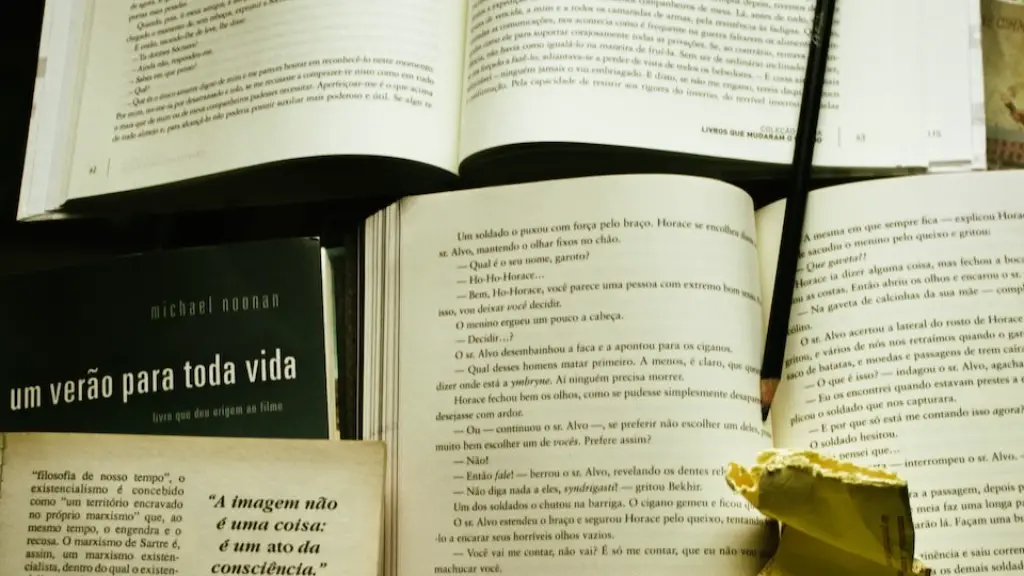Defining a Poetry Portfolio
A poetry portfolio is an interpreted collection of artwork with words that expresses artistic expression and imagination. It is a tool used by poets for sharing their ideas, feelings and works of poetry to an audience or reader. The portfolio can contain a variety of written pieces, including short stories, systemized verse, songs, and traditional styles of writing poetry. While some poetry portfolios have been used to measure competencies, a modern poetry portfolio is mainly created for the artistic value it has.
Themes and Language Used in a Poetry Portfolio
Poetry portfolios are typically composed of diverse pieces that each express a unique theme. A common theme among many poems is love, although there are many other topics that can be discussed. Additionally, a portfolio can be composed of rhymes, thoughts, musings, and even quotes. The language used in a poem portfolio often relies on metaphors, analogies, similes, and other descriptive techniques in order to convey the poem’s message. Furthermore, when creating a portfolio, poets often adhere to certain verse structures, from free verse to syllable counts.
Elements of a Portfolio
When creating a portfolio of poems, poets often strive to include a set of unifying elements that tie the entire portfolio together. Whether it be through characters, symbolism, typography, or a common setting, unifying elements help to emphasize the artistic value of the poems. A successful portfolio will also include a variety of literary techniques, ranging from wordplay and allusions to irony and hyperboles.
Benefits of a Poetry Portfolio
Creating and maintaining a portfolio of poetry can be beneficial in many ways. It allows the poet to document and share their craft, as well as to visually interpret their work in a meaningful way. Additionally, it can serve as a learning tool for readers, providing an opportunity for them to gain insight and better understand the creative process of a poet. Further, by reviewing the progress of poems in a portfolio, the poet can easily analyze their growth and assess their writing skills.
Creating a Poetry Portfolio
When assembling a portfolio, poets should focus on the quality and quantity of their work. Poets should create pieces that accurately convey the various emotions, ideas, and stories they wish to share. When selecting which pieces to include in the portfolio, poets should consider the relevancy, comprehensiveness, and comprehensibility of each poem. In addition to the words, poets should also consider the visual aspects of the portfolio, such as format, design, titles, and page breaks.
Marketing a Poetry Portfolio
Adding the right marketing techniques can help to ensure that the portfolio is seen by the right people in the right places. To market a portfolio, poets can join writing forums, submit their works to publications, and read their works publicly. Additionally, poets can use blogging, podcasting, and other forms of SEO, such as keyword optimization, to draw more attention to their portfolios.
Publishing a Poetry Portfolio
Once a portfolio is completed, poets may choose to publish it for readers, organizations, and publishers. To do this, poets can self-publish the portfolio independently or can pursue conventional publishing options. The option chosen will depend on the scope of the portfolio, the target audience, and the budget of the poet.
Tools for Assembling a Poetry Portfolio
Creating a poetry portfolio requires focus, creativity, and artistic expression. Thankfully, there are a range of tools that can assist poets in their craft. These tools can include books, websites, and other forms of technology. Furthermore, poets can also attend workshops and join communities to draw inspiration and knowledge from peers.
Submitting a Poetry Portfolio
Submitting a portfolio of poetry is the final step before a poet can share their work with a wider audience. Submissions can be made to contests, magazines, galleries, and other organizations that accept poetry. In the submission process, poets should carefully consider the instructions provided by the organization or publication as well as their own personal goals for the work.
Structuring a Poetry Portfolio
Organization is key when creating a poetry portfolio. Poets should group their works together that share a common theme, mood, or message. Additionally, poets should factor in aesthetic considerations when structuring the portfolio, such as the size and shape of each poem, the spacing between each poem, and the font used throughout the portfolio.
Maintaining a Poetry Portfolio
Maintaining a poetry portfolio is essential in order to ensure consistency in quality and content. To do this, poets should periodically review and revise their work, especially if the work has been submitted to an organization or publication. Poets should also review their portfolios with a critical eye to ensure the work is up to their standards.
Sharing a Poetry Portfolio
Once a portfolio is completed, the poet can share it with the world. To do this, poets can set up websites, social media accounts, and blogs that can host the portfolio and allow readers to engage with the work. Additionally, poets can take advantage of print-on-demand resources that allow for the printing of physical copies of their work.



